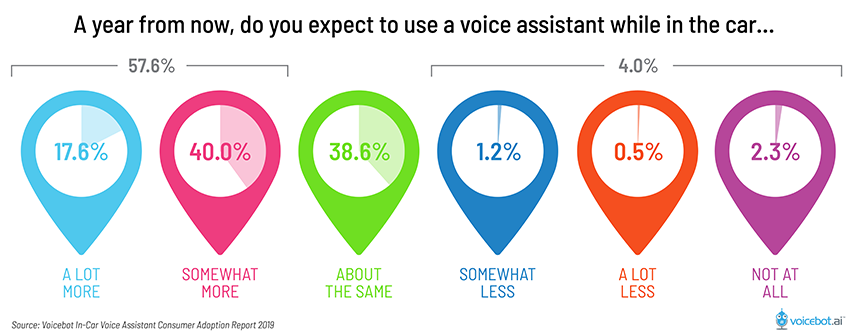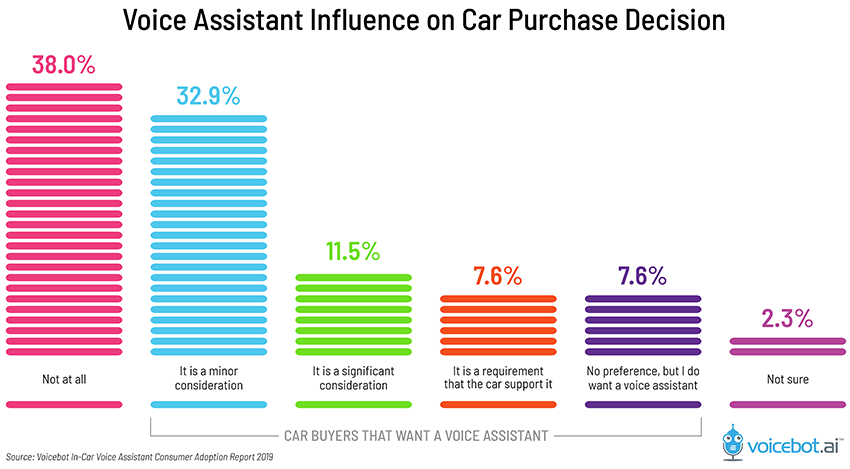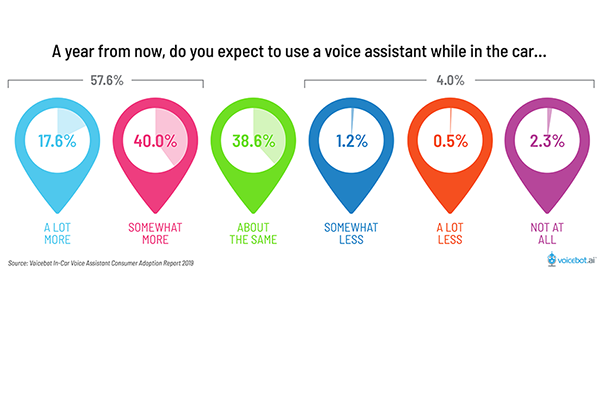Consumers Will Use Voice Assistants More While Driving in 2019 and They Are Already Influencing New Car Buyer Decisions
The In-Car Voice Assistant Consumer Adoption Report published this month found that 57.6% of U.S. adults expect to use voice assistants more frequently while driving in 2019. Only 4% of drivers that have tried a voice assistant in the past expect to decrease use. This correlates closely with the more than half of drivers that believe in-car voice assistants have improved over the past two years. The results come from a national survey of U.S. adults conducted by Voicebot.ai in conjunction with Drivetime.fm and Voice of the Car Summit.

Voice Assistant Access is Influencing New Car Buyer Decisions
If consumers are using voice assistants more while in the car, it would be logical that some of them would start to consider voice access an important feature. The survey results suggest this is the case today. Sixty percent of consumers that have used a voice assistant while driving say the availability of a preferred assistant is now a factor in their car buying decision. The majority of those, 32.9%, still say it is a minor consideration, but nearly 20% consider it either a significant consideration or requirement.

As voice assistant use grows overall and consumer habits form around preferred assistants, these numbers are likely to rise further. Niko Vuori, CEO and founder of Drivetime.fm which recently closed a $4 million funding round to build voice interactive games for drivers, noted that:
I was interested to see that voice assistants are now a consideration in car purchasing decisions for 60% of consumers. It shows that voice interactivity has truly made it into the mainstream and that consumers are now starting to view voice assistants and voice interactions in general as basic ‘table stakes.’
The idea of “table stakes” or minimum requirements to be competitive is likely why car manufacturers such as Mercedes are including up to four different voice connectivity options in the car. These include a native assistant provided by Mercedes that leverages capabilities of both Nuance Dragon Drive and SoundHound, along with Apple CarPlay, Android Auto, and Bluetooth connectivity to a smartphone. Industry professionals say that automakers would prefer to have consumers use the voice assistant provided with the car in most cases, but are providing multiple options because they want to provide features that influence consumer purchase decisions. It looks like access to your preferred voice assistant is starting to become one of those features.
You can download the full report that includes 17 charts and over 30 pages of analysis of voice assistant use in the car by clicking the button below.
Download Full Report
Follow @bretkinsella Follow @voicebotai
Drivers Use Voice Assistants to Make Phone Calls, Get Directions, and Find Restaurants
Spotify to Introduce In-Car Voice Interactive Device in 2019 Priced at $100 – Financial Times









